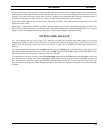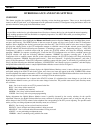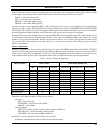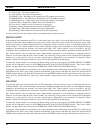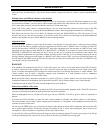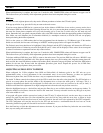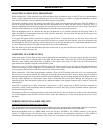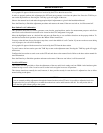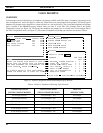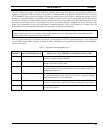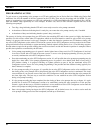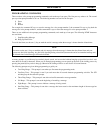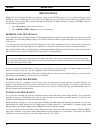
BILLING FILES LBI-3907
7
65
The GTI Configurator will give you precise instruction on when to insert your formatted floppy diskettes into the computer.
Make a new set of backups for each week in the billing period. That way, you always have archived data for billing should
your hard disk data become damaged.
If you need to restore the database from backup diskettes onto the computer hard disk, use the File Restore Call Detail
Records menu item. The GTI Configurator will give you precise instruction on when to insert your backup diskettes into the
computer. Make sure to insert the correct set of backups, and in the correct order. Before you insert each backup diskette into
the computer, it is a good idea to "write protect" the diskette (black label covering the notch on 5-1/4" media; shutter open on
3-1/2" media).
CALL DETAIL FILE FORMAT
Telephone call detail information, retrieved from the optional IAM unit(s), is stored as ASCII files on the GTI Configurator’s
hard disk. These files will be located in the GTICON directory, unless a separate billing file directory named GTIBILL was
set up. Once the call detail information is loaded into these files, you may use an appropriate billing package to read the files
and create billing information.
Call detail information for each GTI unit in each system is contained in a separate file. The call detail information is in the
form of individual Call Detail Data Records, each being the same fixed number of bytes in length and corresponding to one
telephone call handled by the line-connected GTI unit. Within each file, the individual Call Detail Data Records are sorted
chronologically. The files are named MMDD####.D$$, where: MMDD is the current month and day, #### is the system
number, $$ is the telco line number, and D indicates that these are Call Detail Data Record files.
If an error occurs when retrieving the call detail information from the optional IAM unit(s), such as an interruption of the
modem call, the current file will be renamed MMDD####.T$$. If it is not possible to retrieve the call detail information
completely and accurately, due to a complete failure of the GTI unit, this file can be renamed MMDD####.D$$ for use by the
billing package.
For more information about the Call Detail Data Record format, see the Billing Correlation Unit manual number given in the
Introduction section of this manual.
MISCELLANEOUS
If you run GTICON in a DOS window under Windows, you will need to set some parameters in the PIF Editor found in Main
program group. Refer to Windows manual on how to use the PIF Editor. We recommend Windows 3.1 rather then 3.0.
Set the execution to 'Background' to allow GTICON to perform tasks in the background while you may have another
application active in the foreground. Also, if you are doing communications, you must make sure the 'Detect Idle Time' check
box is not checked. This is to let GTICON work without needing key input to keep it active under Windows.
You may find that operation at >9600 baud is unreliable for slower computers. It is best if you reduce the baud rate under
these circumstances.



